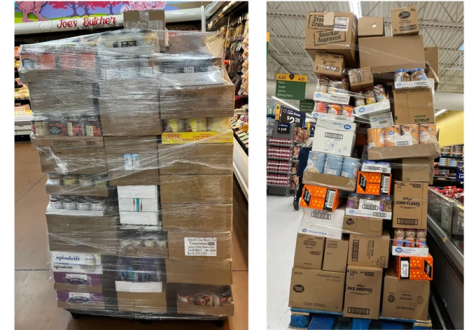There has always been a need to build pallets consisting of different SKUs. This is particularly evident in the beverage and food industry, where warehouses handle various types of SKU cases in different sizes and characteristics, such as cans, plastic and glass bottles, tetra paks, and kegs. With retailers seeking to offer a wide variety of choices to their consumers, distributors are tasked with meeting this demand.
Mixed palletizing is commonly employed for B2B shipments, such as "replenishments" to small shops. In this scenario, the shop purchases multiple products, but not in full-pallet quantities. This form of palletizing helps warehouses manage a variety of items, like beverages, industrial supplies, or pharmaceuticals, all in one shipment, streamlining order fulfillment.

What Is Mixed Palletizing?
Mixed palletizing, also known as mixed-case, mixed load, or mixed SKU palletizing—is the process of arranging different products, each with unique sizes and shapes, onto a pallet or pallets for shipment. This method not only accommodates varied consumer preferences but also optimizes the shipping and handling process.
How It’s Done?
There are two main approaches to mixed palletizing:
- Manual Method: Workers pick various SKUs from warehouse racks and shelves and manually arrange them on pallets. This process depends heavily on the picker's skill and experience, which vary and often lead to inefficiencies.
- Software-Guided Method: Leveraging warehouse optimization software (WOS) that directs the stacking process enhances pallet stability and ensures safer transportation.
Challenges of Manual Mixed Palletizing
Typically, warehouses handle mixed palletizing manually in pick and pack operations - during a pick tour workers will pick different-sized SKUs from racks and shelves and arrange them directly onto pallets.
During a pick tour, workers receive a list of all the picks that need to be made, along with the warehouse location next to every SKU. Case picking is often part of this process, where individual cases or cartons of products are selected and placed on pallets.
Experienced pickers often rely on their knowledge of how products look and which SKUs would form the first layers of the pallets. However, on average, it takes new pickers 2-3 months to achieve the productivity levels of an experienced picker. Despite this, warehouses are increasingly relying on temporary warehouse workers with high turnover rates. For inexperienced pickers, this task becomes very complex, leading to 2 errors:
- Bad Stacking: When pickers are given a list of items that need to be picked, they use intuition & expertise to place the items on pallets, leading to unstable loads.
- Long Walking Distances: Pickers will choose picking paths having to consider various parameters such as weight & size of each SKU, stackability of SKUs, and SKU location, which leads to long pick paths due to the complexity of the task.
The manual way leads to inconsistent pallet builds and product damage. This type of palletizing quickly reaches its limits in terms of accuracy and efficiency.
Smarter Approach to Mixed Palletizing
To increase picking productivity, you can take advantage of AI-assisted picking guidance that combines the following:
- An AI layer that combines 3D pallet stacking and pick distance optimization
- An execution layer that provides clear instructions to the pickers, using 2D or 3D visualizations
This solution is the combination of 2 warehouse optimization solutions working together with humans in pick and pack operations:
- Picking optimization - get the shortest picking path while considering item dimensions & the sequence of items to be placed on a pallet.
- Mixed 3D pallet stacking - get the optimal instructions on how to place each item on a pallet

- Build stable pallets
- Ship less air
- Increase picking productivity (picks per hour)
- Save on transportation costs
- Reduce product damage
Integrate within your warehouse management system (WMS) and have a flexible, cost-effective approach to optimization, enabling you to adapt and scale with minimal upfront investment.
Optimize Pallet Building in Your Operations
Book a quick call to discover how it works.
Frequently Asked Questions
How is palletizing done in pick and pack operations?
In pick and pack operations, workers pick items from storage and stack them directly onto pallets during a pick tour.
What is mixed palletizing?
It's stacking different products (SKUs) on a single pallet for shipment.
What are common issues with manual palletizing?
Unstable pallets, long pick paths, product damage, and inconsistent performance.
How long does it take for new pickers to become efficient?
It entirely depends on your process. Typically it can be anywhere from 2 weeks to 3 months to match experienced pickers' productivity.
Can software help with palletizing in pick and pack operations?
Yes, warehouse optimization software can guide workers in picking and stacking to improve speed and pallet stability.
Is there an easier way to train new warehouse staff?
Yes. Using software that gives visual instructions helps new pickers get productive faster.

